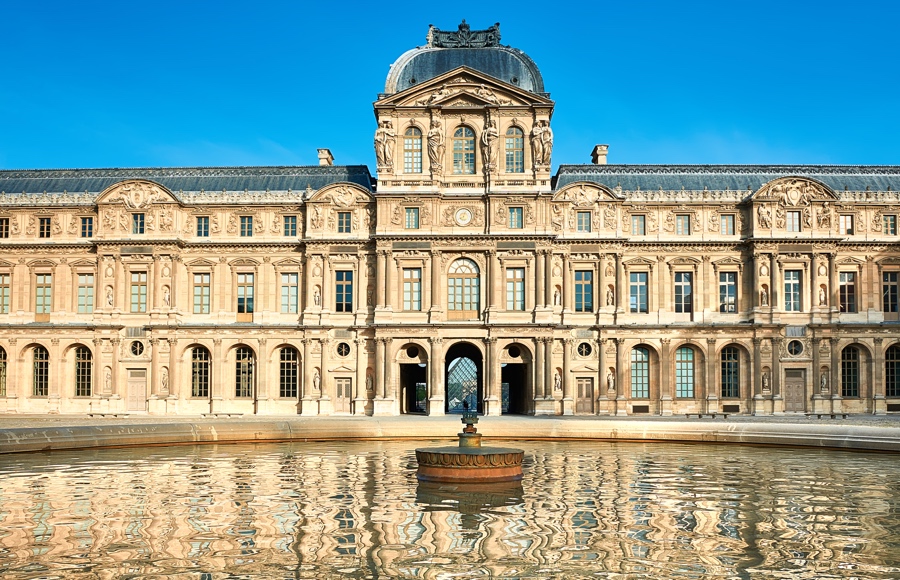Louvre: description, expositions and practical information
The most famous museum on the planet, the symbol of Paris, the pride of France - it’s all about the Louvre. Imagine 22 football fields at a time, fill this space with tens of thousands of sculptures, paintings, jewelry, ceramics, and décor - everything that mankind has produced over the past 5,000 years. Imagine that every day two infantry divisions (25,000-30,000 people) march through this territory. All that is the Louvre.
Why the Louvre is worth a visit
Almost 10 million people every year visit the Louvre to see Mona Lisa and Venus of Milos. In general, the museum offers 35,000 canvases, statues, frescoes, engravings and engravings. And this is only a small part: only a third of a million of them are in the funds of the museum. Usually, paintings are exhibited for three months and then sent to the reserve to avoid damage. Even you are strong enough to spend up to 10 exploring the museum, for each item you will get only 1 second. thus, the logical conclusion is that it is necessary to plan the visit in advance.
Although the Louvre's expositions mostly follow "chronological" and "national" principles, there are numerous exceptions. The fact is that the collections donated to the Louvre are exhibited in their entirety out of respect for the donors. Therefore, do not be surprised if the paintings of your favorite artist you will have to "catch" one by one.

Here are the main sections of the museum:
- Ancient East (art and culture of Iran, Messopotamia and Levant). In this collection you will find a stele with the carved laws of Hammurabi - the oldest monument to the rule of law)
- Ancient Egypt (including Hellenistic and Roman periods. Behind the world-famous sphinx - here)
- Ancient Greece and Rome (there is also an Etruscan collection of monuments - there is no analogue to it in the world)
- The art of Islam (a relatively new collection opened to the public only in 2003)
- Sculptures (a collection of French and Italian statues from the 6th to mid-19th centuries)
- Decorative-applied art (dishes, furniture, tapestries, jewelry and sculptures - for example, the famous equestrian statue of Charlemagne)
- Graphic art: drawings, engravings, prints, prints... In short, everything that was not written in oil or watercolor on canvas (the most extensive collection of the museum)
- Painting: in addition to the well-known Gioconda - 4 more paintings by Leonardo da Vinci, as well as paintings by Raphael, Titian, Correggio, El Greco, Goya, Delacroix and hundreds of others (about 6 thousand exhibits)
- Antique halls (plus East and Egypt) are mainly located on the first floor, while painting and applied arts occupy the second and third floors

French works of art (mainly) are concentrated in the northern wing of the Louvre ("wing of Richelieu"), while Italian works of art, including Gioconda, are concentrated in the southern wing ("wing of Deon", second floor).
In addition to the three above-ground floors, there is a fourth floor, the basement. It is almost unattended by tourists. And for nothing! After all, it is there that you can still see the preserved part of the "old Louvre" - fragments of the walls of the fortress of the 12th century. And not only to see, but also to touch them.

Practical information
Address: Palais Royal, Musée du Louvre, 75001.
How to get there: by buses no. 21, 27, 39, 48, 68, 69, 72, 76, 95 or tourist buses Open Tour. You can also take the subway: Palais Royal Station - Musee du Louvre on branch 1 or 7. It is also possible on the Seine, on Batobus pleasure boats (5 minutes walk from the quay).
Open Monday, Thursday, Saturday, Sunday from 9:00 to 18:00; Wednesdays and Fridays from 9:00 to 21:45. The museum is closed on Tuesdays, as well as on January 1, May 1 and December 25.



